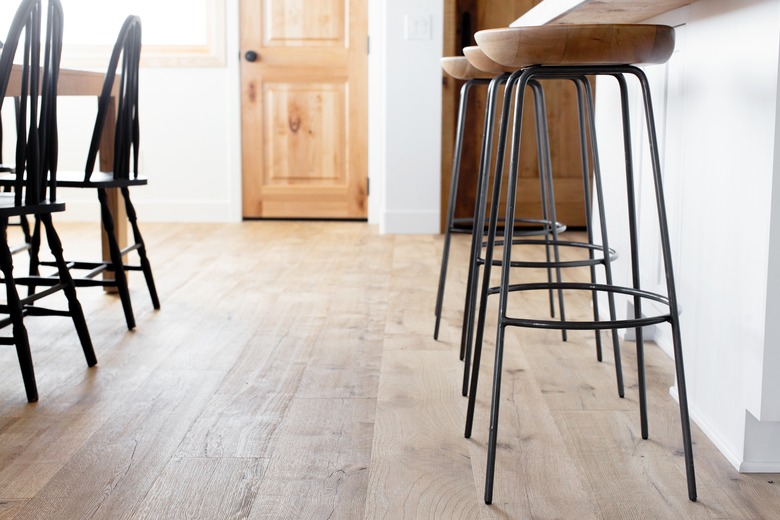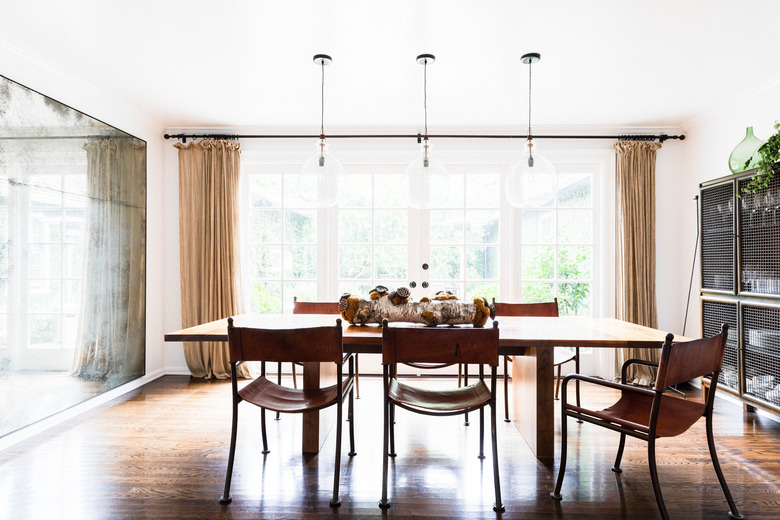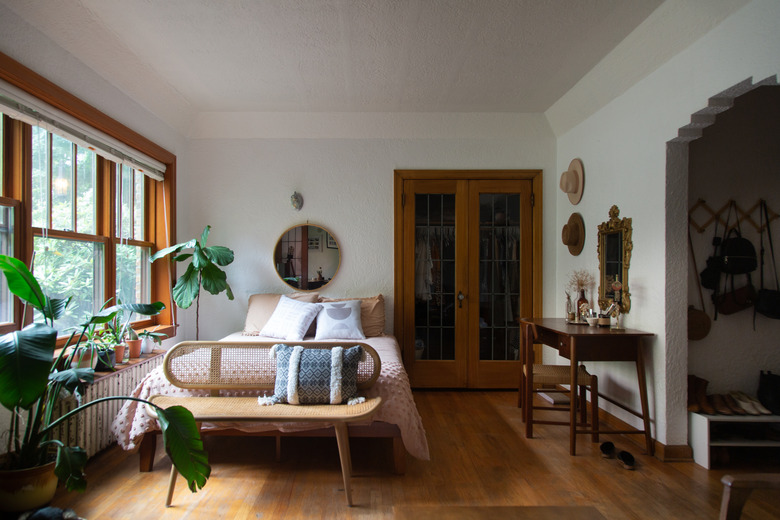Common Bamboo Flooring Problems
Properly installed bamboo flooring will last for years and is an eco-friendly way to enhance the look and value of any home. However, since bamboo is a natural material, it is host to some problems after installation, including dents, scratches, warping, cupping and fading. Understanding the origins, complexities and limitations of bamboo flooring will help avoid issues altogether or correct them as they arise.
The Origins of Bamboo Flooring
The Origins of Bamboo Flooring
According to the Wood Database, bamboo is a tall grass that grows in warmer climates around the world. While there are hundreds of bamboo species, the timber used in bamboo flooring comes from the Phyllostachys edulis and Bambusa plants located in southern China. Bamboo is self-regulating, meaning that it regenerates after harvest and matures within three to five years.
With bamboo's popularity soaring, some manufacturers have cut corners to get more of it on the market quicker. They sometime harvest the plants too early and create planks with immature materials that can be more prone to damage. They may also use adhesives that contain health-damaging toxins. Only purchase bamboo flooring from a reputable dealer who has a Forest Stewardship Council certificate. The FSC is an international organization that promotes responsibility toward the world's forests and ensures the high quality of the products that come from them.
Bamboo comes in solid planks in which adhesive bonds pieces of the plant together. It also comes as engineered bamboo flooring planks in which the top layer is bamboo, and the core layers are plywood. It can be hard to tell the difference between bamboo and traditional hardwood flooring, as they are often put in the same category among retailers and manufacturers and are natural materials with similar issues.
Fading and Color Changes in Bamboo Flooring
Fading and Color Changes in Bamboo Flooring
One of the most common issues concerning bamboo flooring is its coloring, which can gradually fade or change over time. This will depend on the type of flooring you have and the amount of sun exposure it gets. If your floors are natural bamboo, which is lighter in color, they will darken. Carbonized bamboo, which is already made darker in a process involving intense heat and pressure, will fade or become lighter. In some cases, bamboo floors can even acquire a yellow hue.
The less sunlight on your floor, the less it will change color or fade. There will still be changes that you can't prevent entirely, but you can mitigate the damage. When purchasing bamboo flooring, make sure to get planks with UV protection included. You can also protect your floors by keeping window dressings closed when the sun is at its peak and by moving throw rugs around frequently to keep areas around them from fading.
Warping and Cupping Bamboo Planks
Warping and Cupping Bamboo Planks
As it is a porous and fibrous natural material, bamboo flooring is prone to expansion or contraction as a result of changes in temperature and humidity levels. After purchase, bamboo should sit outside of its packaging for 72 hours to acclimate to your home before installation.
While it is more resistant to water damage than traditional hardwood, bamboo is not waterproof. If liquids are allowed to sit on the surface of the floor for too long, planks can warp or cup, meaning the edges of the planks will swell and cause their centers to dip. Unchecked spills can also lead to mold or mildew in the subfloor.
To keep moisture damage at bay, do not install bamboo in water-prone areas like a kitchen or bathroom and wipe spills as soon as they occur. Also, steer clear of frequent wet mopping. If your floors continue to warp or cup, there may be an underlying source of moisture that a professional can help you uncover if you can't find it on your own. When the high moisture content subsides, if the damage isn't already too significant, a floor's cupped or warped planks can return to their original state.
Scratches, Dents, and Cracks in Bamboo Flooring
Scratches, Dents, and Cracks in Bamboo Flooring
Bamboo flooring varies in its hardness. Strand-woven bamboo, created from compressed fibers exposed to extreme heat and pressure, is one of the hardest materials on the market — it is three times as hard as oak. Alternatively, due to its creation process, carbonized bamboo is a much softer wood. The harder the bamboo, the fewer dents, scratches and cracks that will occur. However, both types of bamboo materials can acquire damage regardless.
Lightly colored bamboo will fare better than carbonized bamboo, and damage will be harder to see when it does happen. Pet nails, shoes such as high heels, furniture lacking padding underneath or furniture dragged across the floor can cause these issues. Tiny particles of dirt and dust can also scratch a floor, dulling its appearance over time.
When it comes to keeping bamboo flooring free from this type of damage, the best defense is a good offense. Keep pets' nails trimmed, use felt pads under your furniture and when moving it, pick it up and place it down gently. Use doormats at entrances to keep debris from entering your home and ask family members and visitors to remove their shoes before entering.
Bamboo Flooring Maintenance
Bamboo Flooring Maintenance
A bamboo floor can last 20 years or more if you routinely maintain it and avoid damaging products.
- To keep small dust and debris particles at a minimum, sweep your floor daily using a soft brush, broom or microfiber mop.
- Clean the floor weekly with a pH-neutral wood-floor cleaner or flooring product. You can also mop a bamboo floor using water, but make sure you don't use an excess of it. Wring out the mop head so that it is only lightly dampened. Never use a steam cleaner on a bamboo floor. If you choose to use a vacuum, make sure it is a hardwood vacuum or has a hardwood attachment.
- To avoid slippery residue on bamboo, do not use waxes, oils, polishes or anything abrasive or acidic, as it may further damage the floor.
- With repeated traffic, it's inevitable that some damage and overall dullness will occur. You can sand and refinish bamboo to remove dents and scratches and revive any well-worn areas. After sanding, apply a new finish to your bamboo floor to make it look as good as new. The number of times you can do this is limited, especially for engineered planks with a veneer, and it's a labor-intensive procedure that you won't want to do often in any case.
References
- The Bamboo Flooring Company: Does Bamboo Flooring Fade or Change Colour Over Time?
- Impressions Flooring Collection: Wood Floor Cupping: Why Is it Happening and How Do I Stop It?
- Floor Critics: Best Ways to Clean Bamboo Flooring
- The Bamboo Flooring Company: Bamboo Flooring Care Guide
- The Wood Database: Bamboo
- Wood Floor Doctor: The Truth About Bamboo Flooring


